If you need to learn how to get rid of $30,000 in credit card debt, there is financial hope. You have options that deliver results while accommodating your lifestyle and budget.
Just how common is credit card debt? According to a 2024 study, 28% of Americans said their main source of personal debt was credit card bills. Whether you’ve dealt with this debt for years or just started dealing with it, we’re here to help.
Look Into Credit Card Forgiveness
Many people don’t realize they qualify for credit card forgiveness, making this option #1 on our list of financial strategies.
Pros of Credit Card Forgiveness:
- Lower Settlements: When you’re in a difficult position to repay your credit card debt, some companies will let you settle for a lower amount so they can still get some of their money. You can try to negotiate a settlement on your own or work with a debt settlement lawyer to increase your chances of a lower settlement.
- Simpler Repayment Terms: Juggling several payments per month is stressful. Credit card forgiveness usually consolidates all payments into a single monthly payment that’s compatible with your gross monthly income. For example, if a higher payment would make it hard to buy food and pay for electricity, they’ll lower it so it’s manageable.
- Protection Against Credit Harassment: Debt collection is nerve-wracking and exhausting, especially when you’re already struggling to keep a roof over your head or food on the table. Credit card forgiveness establishes a new payment method that keeps collectors from incessantly contacting you.
Cons of Credit Card Forgiveness:
- Not All Credit Card Companies Will Lower a Settlement: Credit card forgiveness can be a gamble since each company comes with different regulations and expectations. Trying to get help from credit solutions programs or contacting multiple credit card departments can also be tiring.
- Negative Credit Scores: Credit card forgiveness often shows up on your credit report and can remain there for up to seven years. If you have plans to buy a home or get a loan on a car, this detail could slow things down.
- Tax Consequences: If you’re approved for credit card forgiveness, the IRS adds any forgiven debt you’ve received to your yearly income. Depending on your tax bracket, you could face an IRS taxation between 10% to 37%. If you’re behind on taxes – or need help with figuring them out – you’ll need to hire a tax professional for this strategy.
Use the Island Approach
The ‘island approach’ can mean dedicating one card to new expenses and the other one to debt repayments only. It can also mean using a collection of credit cards for specific purposes.
For example, you could have one credit card to pay for smaller costs like a week of groceries, then a debit card dedicated to debt repayment.
Pros of the Island Approach:
- One Step at a Time is Easier: Since debt is stressful enough as it is, the island approach helps you tackle the amount little by little. Different cards make it easy to keep your money sorted and track your expenses clearly.
- Gradually Build Financial Discipline: Since this approach takes time, you’ll build a valuable skill set of financial discipline when it comes to repayment, scheduling, and tracking income.
- Improve Your Credit Score: Since you’re paying off your debt on multiple cards, you have the benefit of gradually improving your credit score with timely payments.
Cons of the Island Approach:
- Slower Progress on Large Debts: The slow and steady approach is a double-edged sword that could still see you managing debt several years down the line. If you have major goals coming in the near future—like moving out of the country or settling down—this slow pace could prove frustrating.
- Lack of Flexibility for Financial Emergencies: Spreading yourself thinner over multiple card payments makes it difficult to save up for emergencies. A health problem or surprise car bill can push you to divert monthly payments, putting you in a painful position, fielding late payment fees or debt collectors later.
Paying More Than The Minimum Amount
While this option may seem like an obvious solution to paying off $30,000 in credit card debt, it’s less appealing due to significant lifestyle changes needed. However, it may just be the option for you if you can’t qualify for credit card forgiveness or are tired of negotiating with debt collectors.
Pros of Paying More Than the Minimum Payment:
- A Straightforward Method of Debt Reduction: Paying a little more than what you owe chips away at your amount faster without the need for paperwork, negotiation, or calls. You can make this work by cutting back on other areas of your life, such as smaller groceries or commuting by bus instead of by car.
- Minimizing High Interest Rates: When you chip away at the amount faster, your interest automatically goes down.
Cons of Paying More Than the Minimum Payment:
- Accidentally Overpaying: Sometimes you can get overzealous in an attempt to take care of your debt and pay too much, making it hard to handle the rest of your bills. Strict discipline is necessary to keep this strategy from becoming a future problem.
- Struggling to Keep Up With a Higher Income Requirement: While cutting back on your spending to pay more on your debt may help in the short term, you may feel the consequences in the long term. Smaller meals, less driving, or delayed medical appointments can catch up with you over time.
Debt Consolidation Loan
You can apply for a debt consolidation loan from a bank or a reputable online lender. This loan would be used to pay off the credit card debt in full, and then you would make regular payments on the loan at a potentially lower interest rate. This can simplify payments by combining multiple debts into a single loan.
Pros of Debt Consolidation Loan:
- Simplified Payments: With a debt consolidation loan, you can combine multiple credit card debts into a single loan. This simplifies your monthly payments by having only one payment to make, rather than juggling multiple due dates and amounts.
- Potentially Lower Interest Rate: If you have good credit and qualify for a favorable interest rate, a debt consolidation loan may offer a lower interest rate compared to your credit card debts. This can save you money on interest charges over time.
- Fixed Repayment Schedule: Debt consolidation loans typically come with fixed repayment terms, which means you’ll have a clear timeline for paying off your debt. This can provide structure and help you stay on track with your repayment goals.
- Improved Credit Score: Consistently making on-time payments on a debt consolidation loan can positively impact your credit score over time. By paying off your credit card debt, you’ll also reduce your credit utilization ratio, which can further boost your credit score.
Cons of Debt Consolidation Loan:
- Potential for Higher Total Interest Paid: While a debt consolidation loan can offer a lower interest rate, it’s important to compare the total interest paid over the loan term. If the loan term is significantly longer than what you would have taken to pay off your credit card debt, you could end up paying more in interest in the long run.
- Risk of Accumulating More Debt: Consolidating your credit card debt with a loan may create the illusion of debt relief, leading some individuals to rack up new credit card balances. This can worsen your financial situation if you continue to use credit irresponsibly.
- Possible Fees or Prepayment Penalties: Some debt consolidation loans may come with origination fees or other charges. Additionally, if you plan to pay off the loan early, you should check if there are any prepayment penalties that could increase your costs.
- Qualification Criteria: To secure a debt consolidation loan with a favorable interest rate, you typically need a good credit score. If your credit score is low, you may have difficulty qualifying for a loan or may be offered a higher interest rate, reducing the potential benefits of consolidation.
Remember, a debt consolidation loan is not a magical solution, but a tool to help you manage your debt more effectively. It’s essential to carefully evaluate your personal financial situation, consider the terms and conditions of the loan, and compare it with other debt management options before deciding.
Balance Transfer
You can explore balance transfer credit cards that offer a low or 0% introductory interest rate for a specific period, typically 6 to 24 months. By transferring credit card balances to this new card, you can save on interest charges and focus on paying off the debt during the introductory period. However, be aware of any balance transfer fees and the interest rate that applies after the promotional period ends.
Pros of Balance Transfers:
- Lower or 0% Introductory Interest Rate: Many balance transfer credit cards offer a low or 0% introductory interest rate for a specified period, typically ranging from 6 to 24 months. This can allow you to save on interest charges and potentially pay off your debt faster during the promotional period.
- Consolidation of Multiple Debts: By transferring your credit card balances to a single balance transfer card, you can consolidate multiple debts into one account. This simplifies your payments and makes it easier to track your progress in paying off your debt.
- Potential Cost Savings: If you’re currently paying high interest on your existing credit card debt, a balance transfer can help you save money by reducing the interest you have to pay, especially during the introductory period.
- Opportunity to Pay Off Debt Faster: With a lower or 0% interest rate, more of your payment goes towards reducing the principal balance, enabling you to make faster progress in paying down your debt if you make consistent and disciplined payments.
Cons of Balance Transfers:
- Balance Transfer Fees: Many balance transfer offers come with fees, typically a percentage of the amount transferred (e.g., 3% to 5% of the transferred balance). These fees can eat into the potential interest savings, so it’s important to factor them into your calculations.
- Expiration of Promotional Period: Once the introductory period ends, the interest rate on the remaining balance will revert to the card’s regular APR, which is often higher than the introductory rate. If you haven’t paid off the debt by that time, you could end up with a higher interest rate, negating some of the benefits of the balance transfer.
- Impact on Credit Score: When you apply for a new credit card for a balance transfer, it can result in a hard inquiry on your credit report, which may temporarily lower your credit score. Additionally, if you close your old credit card accounts after transferring balances, it can affect your credit utilization ratio and average age of accounts, which are factors in determining your credit score.
- Potential for Increased Debt: If you continue using your old credit cards or accumulate new balances on top of the transferred debt, you may find yourself with even more debt to manage. This can exacerbate your financial situation rather than providing relief.
It’s crucial to carefully evaluate the terms and conditions of any balance transfer offer, including the length of the introductory period, the regular APR, and any associated fees. Consider your ability to pay off the debt within the promotional period and be mindful of your spending habits to avoid further debt accumulation.
Debt Management Plan (DMP)
If your debt situation is more severe, you can work with a nonprofit credit counseling agency like Debt Reduction Services to create a DMP. Through a Debt Management Plan, you can consolidate credit card debts into a single monthly payment and potentially reduce interest rates.
The credit counseling agency will negotiate with creditors on your behalf, but it’s important to choose a reputable agency and understand the fees and implications of a DMP.
Pros of Debt Management Programs:
- Consolidation and Simplification: A DMP allows you to consolidate multiple credit card debts into a single monthly payment. Instead of managing multiple payments, due dates, and interest rates, you make a single payment to the credit counseling agency, which then distributes the funds to your creditors.
- Potentially Lower Interest Rates: In many cases, credit counseling agencies can negotiate with your creditors to lower your interest rates. With reduced interest rates, more of your monthly payment goes towards reducing the principal balance, allowing you to pay off your debt faster.
- Financial Education and Counseling: DMPs often provide financial education and counseling services to help you develop better money management skills. This can include budgeting assistance, guidance on debt reduction strategies, and financial literacy resources. These tools can empower you to make informed financial decisions and avoid future debt problems.
- Creditors’ Cooperation: Creditors are more likely to work with credit counseling agencies than with individual debtors. They may be willing to accept lower monthly payments, waive late fees, or stop collection activities as part of the DMP. This cooperation can provide relief and reduce the stress associated with dealing with creditors directly.
Cons of Debt Management Programs:
- Impact on Credit Score: Participating in a DMP can have an impact on your credit score. While enrolled in the program, your credit report may indicate that you’re in a Debt management program. However, as you make consistent payments and reduce your debt, your credit score will gradually improve over time until it is paid off.
- Extended Repayment Period: DMPs typically require a commitment to a structured repayment plan, often lasting three to five years. While this can make your monthly payments more manageable, it also means that it will take longer to become debt-free compared to more aggressive repayment strategies.
- Limited Debt Types: DMPs primarily focus on unsecured debts, such as credit card debt and medical bills. They may not include other types of debt like student loans, mortgages, or car loans. If you have significant debt in these areas, you may need to explore alternative strategies to manage those specific obligations.
- Possible Fees: Credit counseling agencies typically charge fees for their services, including setup fees and monthly maintenance fees for managing your DMP. It’s essential to understand and consider these fees before enrolling in a DMP. Look for reputable nonprofit credit counseling agencies that provide transparent information about their fees and services.
It’s important to thoroughly research and choose a reputable credit counseling agency if you decide to pursue a DMP. Take the time to understand the terms, costs, and potential impacts on your credit score before making a decision. Consider consulting with a financial advisor or seeking professional guidance to assess whether a DMP is the most suitable option for your specific financial situation.
Snowball Method
This is one of the most popular debt repayment strategies. With the snowball method, you can make minimum payments on all your debts but focus on aggressively paying off the smallest debt first. Once that debt is paid off, you can redirect the money towards the next smallest debt, creating a snowball effect.
Pros of the Snowball Method:
- Psychological Motivation: The Snowball Method focuses on paying off the smallest debt first, regardless of interest rates. By eliminating smaller debts early on, you experience a sense of accomplishment and motivation, which can help you stay motivated throughout the debt repayment process.
- Quick Wins: As you pay off smaller debts, you free up minimum payments that can be applied to the next debt. This creates a snowball effect, allowing you to make larger payments on larger debts as you progress. This approach can build momentum and help you feel a sense of progress early on.
- Simplicity: The Snowball Method is straightforward to implement. You prioritize debts solely based on their balances, making it easy to understand and track your progress.
Cons of the Snowball Method:
- Potential for Higher Interest Payments: Since the Snowball Method doesn’t consider interest rates, you may end up paying more interest in the long run. Larger debts with higher interest rates might accumulate more interest over time.
- Delayed Focus on High-Interest Debts: If your highest-interest debt is also your largest debt, the Snowball Method delays tackling it until later in the process. This means it may take longer to eliminate high-interest debt compared to the Avalanche Method.
Avalanche Method
The avalanche method involves prioritizing debts based on interest rates, paying off the highest-interest debt first while making minimum payments on the others.
Pros of the Avalanche Method
- Potential for Lower Total Interest Payments: The Avalanche Method prioritizes debts based on interest rates, meaning you tackle high-interest debts first. By focusing on the costliest debts, you can potentially save money on interest payments over the long term.
- Efficiency: The Avalanche Method allows you to pay off debts in the most cost-effective manner, targeting high-interest debts that accumulate interest quickly. This approach helps you eliminate expensive debt more efficiently.
Cons of the Avalanche Method
- Lack of Immediate Wins: Unlike the Snowball Method, the Avalanche Method may not provide the same psychological motivation early on since you may be tackling larger debts with higher interest rates. This can make the process feel slower and less rewarding at the beginning.
- Complexity: The Avalanche Method requires more careful consideration of interest rates and debt balances. You may need to juggle multiple interest rates and payment amounts, which can be more challenging to manage and track.
Increase Income and Reduce Expenses
You can try to increase your income to pay down your debt faster, such as taking on a side job or freelancing. Additionally, you should evaluate your expenses and identify areas where you can cut back to free up more money for debt repayment.
Pros of Increasing Income and Reducing Expenses
- Accelerated Debt Repayment: By increasing your income, you can allocate more money towards debt repayment. The additional funds can help you pay off your credit card debt faster, reducing the overall interest paid and the time it takes to become debt-free.
- Financial Flexibility: Increasing your income provides greater financial flexibility and can help you cover your living expenses while still making significant debt payments. It can also allow you to build an emergency fund and address other financial goals simultaneously.
- Long-Term Financial Security: A higher income not only benefits your current debt situation but also contributes to long-term financial security. It can help you save for retirement, invest in assets, and build wealth over time.
- Immediate Impact: Cutting expenses allows you to free up money immediately. By reducing unnecessary spending, you can redirect those funds towards debt repayment, making a tangible impact on your credit card debt right away.
- Improved Budgeting Skills: Evaluating and reducing expenses requires a comprehensive review of your budget and spending habits. This process helps develop disciplined financial habits and better money management skills, leading to long-term financial health.
- Sustainable Lifestyle Changes: Adopting a frugal mindset and identifying unnecessary expenses can lead to long-lasting changes in your spending behavior. By prioritizing needs over wants and adopting a more minimalist approach, you can maintain a healthier financial lifestyle even after you’ve paid off your debt.
Cons of Increasing Income and Reducing Expenses
- Availability and Effort: Increasing your income may require additional effort and time investment. It could involve taking on a second job, freelancing, or starting a side business. Balancing multiple income streams with other responsibilities may require sacrifices and a significant commitment of time and energy.
- Uncertainty and Risk: Generating additional income can come with inherent risks. Starting a new business or pursuing unconventional income streams can be unpredictable, and success is not guaranteed. Additionally, certain ventures may require financial investments or carry associated costs.
- Limited Potential: While reducing expenses is an essential component of debt repayment, there may be limitations to how much you can cut. Some expenses, such as housing or healthcare, may be fixed or difficult to reduce significantly. Depending solely on expense reduction may not be sufficient to meet your debt repayment goals.
- Quality of Life Impact: Cutting expenses often involves making sacrifices and adjusting your lifestyle. This can impact your quality of life, and it may be challenging to maintain motivation and discipline over an extended period. Striking a balance between reducing expenses and maintaining a reasonable standard of living is crucial.
It’s important to consider a combination of both strategies – increasing income and reducing expenses – to maximize your debt repayment potential. Evaluate your unique situation, set realistic goals, and create a comprehensive plan that incorporates strategies from both approaches.
Additionally, seeking professional financial advice or consulting with a financial planner can provide personalized guidance on how to get rid of 30k in credit card debt, such as creating a DMP or applying for credit card forgiveness.
Frequently Asked Questions
Do you have more questions on how to pay off a lot of credit card debt? We’ll answer them below.
How long does it take to pay off $30,000 in credit card debt?
This timespan depends on the type of debt repayment method you use. If you do the minimum payment on $30,000 in credit card debt, it would take roughly thirty-eight years to pay it all off; however, you would gather up a lot of interest along the way, setting you back even further.
What is the fastest way to pay off credit card debt?
The fastest ways to pay off credit card debt are balance transfers, credit card forgiveness, or paying more than the minimum payment by reducing expenses and increasing income.
How do I ask for debt forgiveness?
You can either contact credit card companies directly to negotiate a settlement or hire a debt settlement lawyer to represent you.
There are a thousand reasons why people end up in debt, and all of them have solutions. There are practical resources that can help you get rid of 30k in credit card debt and move forward in life. There’s no need to jump into a decision right off the bat. Reach out to a counselor today to ask questions or bring up concerns—we’d love to learn more about your debt situation and how we can help.
About the Author
Eric has amassed extensive experience in the financial and credit counseling sector, dedicating numerous years to this industry. Presently, he serves as a certified credit counselor at Debt Reduction Services, leveraging his expertise to assist individuals in managing their debts effectively. Throughout his career, Eric has consistently exhibited his commitment to empowering consumers with the knowledge and tools necessary to navigate their financial challenges.











